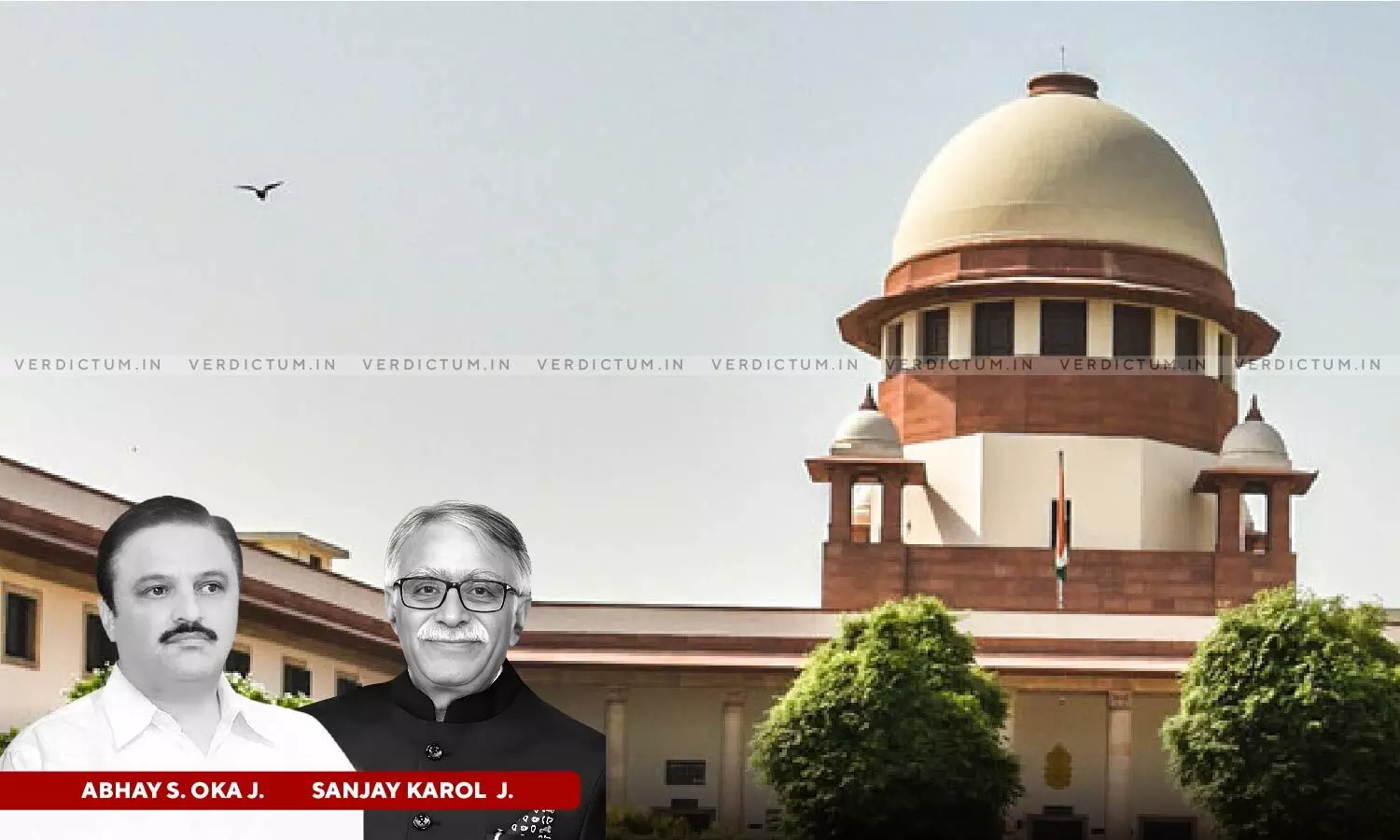
Bar U/S 35 Stamp Act Inapplicable If Document Is Not Chargeable With Duty; Copy Can Be Adduced As Secondary Evidence If Other Legal Requirements Are Met: SC
 |
|Section 35 Indian Stamp Act Has No Application
The Supreme Court held that Section 35 of the Indian Stamp Act 1899 has no application if the document sought to be admitted is not chargeable with duty.
The court therefore observed that a copy of such a document can be adduced as secondary evidence if other legal requirements are met.
The Bench comprising Justice Abhay S. Oka and Justice Sanjay Karol held, “To impose the bar of admissibility provided under this section, the following twin conditions are required to be fulfilled: (i) Instrument must be chargeable with duty; (ii) It is not duly stamped. 28. If the documents sought to be admitted are not chargeable with duty, Section 35 has no application.”
Advocate Chetan Pathak appeared for the Appellant (Plaintiff) and Additional Solicitor General K M Nataraj appeared for the Respondent (Defendant).
Plaintiff and Defendant, entered into an agreement. Following a dispute, the Plaintiff, allegedly put in possession by Defendant, filed a suit for specific performance. The Trial Court initially allowed the submission of a copy of the agreement as secondary evidence under Section 65 of the Indian Evidence Act (IEA). However, allowing the review petition filed by the Defendant, the Court held that secondary evidence of an agreement to sell could not be allowed as it was not executed on a proper stamp, thus barred under section 35 of the Stamp Act. The High Court also affirmed this view of the Trial Court. Aggrieved, the Plaintiff approached the Apex Court.
The Plaintiff contended that section 35 is inapplicable, given the absence of a stamp duty requirement at the time of the agreement's execution. The Defendant contends that an unstamped or deficiently stamped document's copy cannot be admitted as secondary evidence if the original is inadmissible under the Stamp Act.
The Court framed the following issues:
“Whether the bar of admissibility created by Section 35 of the Indian Stamp Act 18991 applies to the agreement(s) to sell dated 04.02.1988 executed by the parties?
Can a copy of a document be adduced as secondary evidence when the original instrument is not in possession of the party?”.
The Court observed that Section 35 of the Act prohibits the admission of instruments chargeable with duty in evidence unless they are "duly stamped." The determination of when a document becomes chargeable is crucial, clarified by Section 2(6) to be during execution, with the relevant date for stamp duty being the execution date. The constitutional framework, particularly Entry 44 of List III, grants concurrent power to levy stamp duty, with the State Legislature imposing it and the Parliament prescribing rates.
“The word 'chargeable,' as defined under Section 2(6), means chargeable under the Act in force at the date of the execution of the instrument. The crucial date which determines the law in force is the date of execution of the instrument, and the stamp duty is to be charged with reference to the date of execution. For stamp duty, the relevant date is the date of execution and not the date of adjudication or the date of presentation and registration of the document”, the Bench noted.
The Bench, while addressing the retrospective application of an Explanation added in 1990 to agreements executed in 1988, noted that it creates a new obligation and cannot be applied retrospectively. Section 35 applies only if the instrument is chargeable with duty and not duly stamped, making it inapplicable in the discussed case dated February 4, 1988.
The Bench observed the distinction between primary and secondary evidence. The Bench noted that primary evidence is required by law and should be presented first, while secondary evidence is admissible only in the absence of primary evidence, provided a proper explanation for its absence is given. Sections 63 and 65 of the IEA define and allow for secondary evidence under specific circumstances.
The Court noted that per Section 65(a) of the IEA, secondary evidence is allowed only when the original is in the possession of the opposing party or a third party who refuses to produce it.
In the context of this case, the Bench emphasized that the document dated February 4, 1988, was not chargeable with duty, making Section 35 inapplicable. The Court held that the document was not liable to stamp duty. The Bench allowed the admission of secondary evidence. The documents sought to be introduced should be taken by the concerned court, and their admissibility should be independently decided according to the law under the IEA.
The Court disposed of the issues as follows:
The first issue was answered negatively, as the documents in question were not required to be stamped at the relevant period to attract the bar of Section 35 of the Stamp Act. The second issue was answered affirmatively, stating that a copy of a document can be adduced as secondary evidence if other legal requirements are met.
Accordingly, the Court allowed the Appeal and set aside the impugned order.
Cause Title: Vijay v Union Of India & Ors. (2023 INSC 1030)